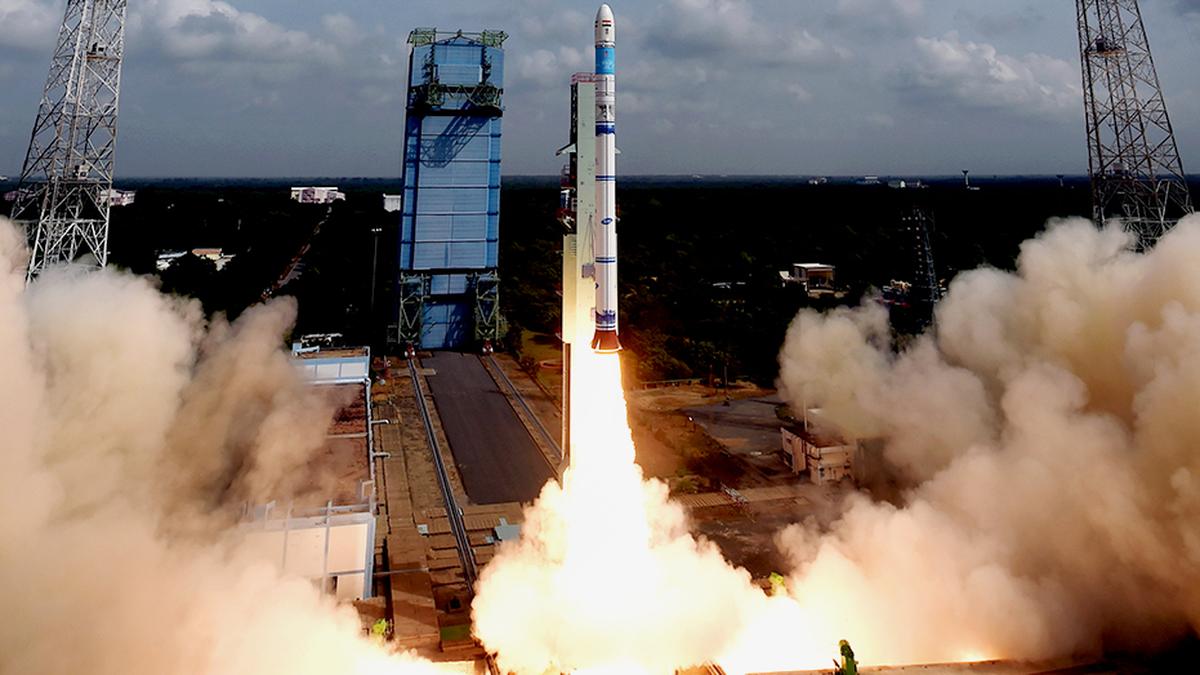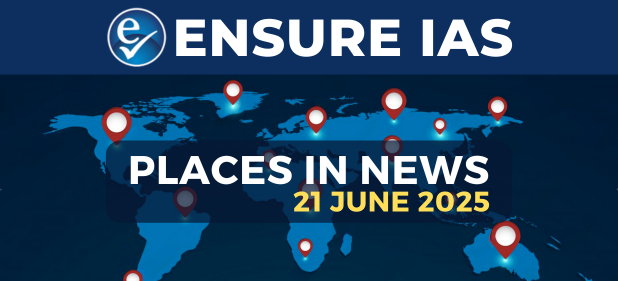- Courses
- GS Full Course 1 Year
- GS Full Course 2 Year
- GS Full Course 3 Year
- GS Full Course Till Selection
- Answer Alpha: Mains 2025 Mentorship
- MEP (Mains Enrichment Programme) Data, Facts
- Essay Target – 150+ Marks
- Online Program
- GS Recorded Course
- Polity
- Geography
- Economy
- Ancient, Medieval and Art & Culture AMAC
- Modern India, Post Independence & World History
- Environment
- Governance
- Science & Technology
- International Relations and Internal Security
- Disaster Management
- Ethics
- NCERT Current Affairs
- Indian Society and Social Issue
- NCERT- Science and Technology
- NCERT - Geography
- NCERT - Ancient History
- NCERT- World History
- NCERT Modern History
- CSAT
- 5 LAYERED ARJUNA Mentorship
- Public Administration Optional
- ABOUT US
- OUR TOPPERS
- TEST SERIES
- FREE STUDY MATERIAL
- VIDEOS
- CONTACT US
HAL-ISRO Deal on SSLVs
HAL-ISRO Deal on SSLVs

Why in the News?
- Hindustan Aeronautics Limited (HAL), a leading aerospace and defence public sector undertaking, has won a ₹511 crore Transfer of Technology (ToT) deal from the Indian Space Research Organisation (ISRO).
- Under this deal, HAL can manufacture and commercialise Small Satellite Launch Vehicles (SSLVs).
- This marks a significant milestone in the commercialisation of India's space technology, supported by IN-SPACe.
What are the Key Highlights?
- Deal Value: ₹511 crore
- Awarding Agency: Indian National Space Promotion and Authorisation Centre (IN-SPACe)
- It is an independent, autonomous agency under the Department of Space (DoS) in India.
- It acts as a single-window interface between ISRO and private companies to facilitate their participation in the space sector.
- IN-SPACe promotes, enables, authorizes, and supervises space activities of non-governmental entities.
- Recipient: Hindustan Aeronautics Limited (HAL)
- Technology: Small Satellite Launch Vehicle (SSLV)
- It is a 3-stage Launch Vehicle configured with three Solid Propulsion Stages and a liquid propulsion based Velocity Trimming Module (VTM) as a terminal stage.
- SSLV is capable of launching around 500 kg satellites into a 500 km planar orbit from SDSC/SHAR.
- The key features of SSLV are Low cost, with low turn-around time, flexibility in accommodating multiple satellites, Launch on demand feasibility, minimal launch infrastructure requirements, etc.
- Support Period: 2 years of complete technical support from ISRO
- Purpose of the deal:
- Manufacture SSLV Launch Vehicles: HAL will build SSLVs using the technology transferred by ISRO, ensuring standardisation and quality as per ISRO specifications.
- Operationalise the SSLV Program: HAL will be responsible for managing end-to-end SSLV operations, from production to launch execution.
- Commercial Launch Services: HAL will offer SSLV launch services to domestic and international clients for placing small satellites in orbit.
- Promote ‘Launch on Demand’ Capability: By ensuring quick manufacturing and turnaround, HAL aims to provide launch services on short notice for time-sensitive missions.
- Enable Technological Self-Reliance: Through this initiative, HAL will gain deep technical expertise in launch vehicle systems, enhancing India’s self-reliance in space technologies.
- Serve the Growing Small Satellite Market: With the increasing demand for small satellite launches globally, HAL will cater to both government and private sector customers.
- Bidding Process:
- Multi-stage evaluation involving eligibility and financial criteria.
- The entire selection process was conducted in a fair, competitive, and transparent manner over several months, ensuring the best bidder was chosen.
- Outcome: HAL selected among three shortlisted bidders as the highest financial bidder.
What are the Challenges and Way Forward?
|
Challenges |
Way Forward |
|
Technology Absorption: HAL needs to fully understand and integrate complex SSLV technology within two years. |
ISRO should provide detailed technical training, hands-on support, and documentation during the ToT phase. |
|
Reliability of SSLV: SSLVs must demonstrate consistent performance and successful launches to gain global trust. |
Conduct multiple test launches under ISRO’s guidance to ensure technical robustness and mission success. |
|
Global Competition: Competing with international small satellite launch providers like Rocket Lab and SpaceX. |
Focus on cost-efficiency, timely launches, and customization options to position SSLV competitively. |
|
Infrastructure Requirements: HAL may need to develop or upgrade facilities for production, testing, and launches. |
Invest in advanced infrastructure, possibly in partnership with government or private investors. |
|
Policy and Regulatory Clarity: Complex regulatory frameworks and export rules may affect private participation. |
IN-SPACe should streamline policies, provide clear guidelines, and support export approvals. |
|
Liability and Insurance: According to international space laws, the Indian government will be held responsible for any wrong with a privately launched SSLV. This may worry private customers who use HAL’s launch services, as they might be unsure about who will handle the risks or losses. |
Explore risk-sharing models and develop insurance mechanisms to protect commercial stakeholders. |
Conclusion:
- The ₹511 crore ToT deal between ISRO and HAL to build and operate SSLVs is a landmark in India’s space privatization journey.
- It exemplifies the government’s vision to commercialize and scale India's space capabilities by involving public and private sector players.
- With the right strategic moves and strong support from ISRO and IN-SPACe, HAL could soon become a key player in the global small satellite launch market.
- However, successful technology absorption, consistent launches, and navigating international competition will be vital in turning this potential into performance.
EnsureIAS Mains Question:Q. Discuss the significance of the Transfer of Technology (ToT) agreement between ISRO and HAL for Small Satellite Launch Vehicles (SSLVs) in the context of India's space sector commercialisation. Highlight the challenges and suggest a way forward. (250 Words) |
EnsureIAS Prelims Question:Q. Consider the following statements regarding Small Satellite Launch Vehicles (SSLVs) and recent developments in India:
Which of the statements given above is/are correct? a. 1 and 2 only Answer: d Explanation: Statement 1 is correct: SSLVs are capable of launching satellites <500 kg into LEO. Statement 2 is correct: HAL received the ToT deal from ISRO, facilitated by IN-SPACe. Statement 3 is correct: One of SSLV’s key features is launch-on-demand with minimal infrastructure. |



